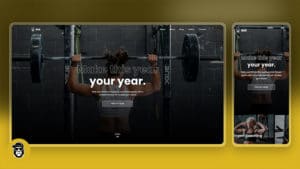Upload and Store Images in MySQL using Node.Js, Express, Express-FileUpload & EJS Layouts
In this article, we will explore the Express-FileUpload NPM package by creating a super simple user profile card and integrate our card with a MySQL database to retain the record.
What you need:
To complete this project you will need a MySQL Database & Node installed. I usually use XAMPP for local development, but you can use whatever you wish as long as the database is MySQL of course.
Create a new project
To create a new project all you have to do is to create a new project folder, let’s call it “upload-files” and then run the following command below in Command line or PowerShell. Make sure that you CD to your project directory. To initialise a new project simply put the following command:
npm init
This will initialise a new project for you and it’s going to ask you a few questions about your project. The most important one is to give your package a name and then you can just keep pressing enter until the installation is over.
This will create a new package.json file for you.
Dependencies Installation
There are a few dependencies that we need to install to get started. Here is the list:
[x] express [x] express-ejs-layouts [x] mysql
Let’s do that by opening the terminal / powershell and install the dependencies by typing the following command:
npm i express express-ejs-layouts express-fileupload mysql
Now let’s install Nodemon which will help us restart the server every time we make a change. Note that Nodemon is a development dependency so we have to install it by adding the –save-dev flag.
npm i --save-dev nodemon
Your packages.json file should look similar to this:
{
"name": "nodejs-user-profile",
"version": "1.0.0",
"description": "",
"main": "index.js",
"scripts": {
"test": "echo \"Error: no test specified\" && exit 1",
"start": "nodemon app.js"
},
"author": "",
"license": "ISC",
"dependencies": {
"ejs": "^3.1.6",
"express": "^4.17.1",
"express-ejs-layouts": "^2.5.0",
"express-fileupload": "^1.2.1",
"mysql": "^2.18.1"
},
"devDependencies": {
"nodemon": "^2.0.7"
}
}
Project Structure
Let’s create the following folders and files, leaving node_modules, readme.md, package-lock and package-json as that should have been automatically generated by now.
You can structure your project the way you like. I am just going to keep it simple and add everything into our app.js file
📂 node_modules 📂 public 📂 css 📜 main.css 📜 main.scss 📂 img 🖼 default.jpg 📂 upload 📂 views 📂 layouts 📜 main.ejs 📜 index.ejs 📜 README.md ⚓ .env 🌍 app.js 📜 package-lock.json 📜 package-json
Let’s create our app.js file and each block of code will be explained with comments.
const express = require('express');
const expressLayouts = require('express-ejs-layouts');
const fileUpload = require('express-fileupload');
const mysql = require('mysql');
const app = express();
const port = process.env.PORT || 5000;
// default option
app.use(fileUpload());
// Static Files
app.use(express.static('public'));
app.use(express.static('upload'));
// Templating engine
app.use(expressLayouts);
app.set('layout', './layouts/main');
app.set('view engine', 'ejs');
// Templating Engine
// Connection Pool
var connection = mysql.createConnection({
host: 'localhost',
user: 'root',
password: 'password',
database: 'userprofile'
});
// Our GET router for the homepage and a simple SELECT MySQL Query
// We also render the page by doing res.render
app.get('', (req, res) => {
connection.query('SELECT * FROM user WHERE id = "1"', (error, rows) => {
// Once done, release connection
if (error) throw error;
if (!error) {
res.render('index', { rows });
}
});
});
app.post('', (req, res) => {
let sampleFile;
let uploadPath;
if (!req.files || Object.keys(req.files).length === 0) {
return res.status(400).send('No files were uploaded.');
}
// name of the input is sampleFile
sampleFile = req.files.sampleFile;
uploadPath = __dirname + '/upload/' + sampleFile.name;
console.log(sampleFile);
// Use mv() to place file on the server
sampleFile.mv(uploadPath, function (err) {
if (err) return res.status(500).send(err);
connection.query('UPDATE user SET profile_image = ? WHERE id ="1"', [sampleFile.name], (err, rows) => {
if (!err) {
res.redirect('/');
} else {
console.log(err);
}
});
// res.send('File uploaded!');
});
});
app.listen(port, () => console.log(`Listening on port ${port}`));In our Views -> Layouts folder we need to create our EJS template. The <%- body -%> is where our index.ejs page will render:
<!DOCTYPE html>
<html lang="en">
<head>
<meta charset="UTF-8">
<meta http-equiv="X-UA-Compatible" content="IE=edge">
<meta name="viewport" content="width=device-width, initial-scale=1.0">
<title>Document</title>
<link rel="stylesheet" href="/css/main.css">
</head>
<body>
<div class="wrapper">
<%- body -%>
</div>
</body>
</html>Now let’s create our index.hbs page, with our form and a loop to display the record from the database:
<form action="/" method="POST" encType="multipart/form-data">
<h3>Upload Profile Photo</h3>
<input type="file" name="sampleFile" accept="image/*" />
<input type="submit" class="btn btn-primary">
</form>
<div class="card">
<% for(var i=0; i < rows.length; i++) { %>
<img class="card__image" src="<%- rows[i].profile_image %>" loading="lazy" alt="User Profile">
<h1 class="card__title"><%- rows[i].name %></h1>
<div class="card__job"><%- rows[i].job_title %></div>
<p class="card__about">
<%- rows[i].description %>
</p>
<button type="button" class="btn btn-primary">View Profile</button>
<% } %>
</div>That’s it. The clean code is available on the GitHub link below with fewer explanation comments.
Demo Video Loop
Demo of uploading an image and saving the record to a MySQL Database:
Thank you for reading this article. Please consider subscribing to my YouTube Channel.
More Resources:


Its says ejs layouts but it looks like it is using hbs?
For some reason, I had handlebars in packages.json, but it’s all EJS. Thanks for this, Frederick I’ve updated the article. I need to upload this to Github as well.
You’re awesome dude! Seriously!
Thanks, Jacques! I appreciate it! 👊😎
Thank you a lot, buddy! This is what I just needed! 😎💪
👊😎